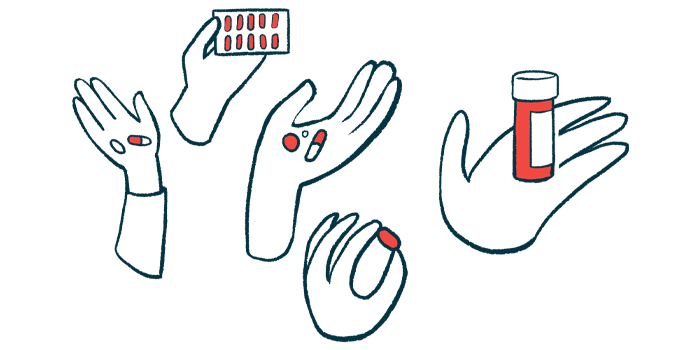1st patient dosed in NMD670 trial for generalized myasthenia gravis
Phase 2b clinical trial to follow 84 patients in U.S., Europe
Written by |

NMD Pharma announced the dosing of the first patient in a Phase 2b clinical trial of NMD670, its investigational oral therapy for generalized myasthenia gravis (gMG).
The SYNAPSE-MG trial (NCT06414954), recently cleared by the U.S. Food and Drug Administration (FDA), is assessing the treatment’s safety and efficacy. It expects to enroll 84 gMG patients, ages 18 to 75, and to be completed by the end of 2025.
The first patient was dosed at SFM Clinical Research in Boca Raton, Florida. Study sites are in the U.S. and Europe.
“While new and approved therapies address the autoimmune response, many patients with myasthenia gravis have persistent symptomatology,” Jorge A. Quiroz, NMD Pharma’s executive vice president and chief medical officer, said in a company press release. “NMD670 is a first-in-class development candidate which is expected to improve muscle power and endurance to help manage persistent and fluctuating symptoms.”
MG is caused by autoantibodies that impair communication between nerve and muscle cells, leading to muscle weakness and fatigue. In generalized myasthenia gravis, symptoms are widespread and involve several muscle groups.
Muscle-directed therapy aims to increase strength
NMD670 is a small molecule designed to inhibit the ClC-1 chloride ion channel in skeletal muscle, which controls voluntary movements. The channel helps muscles relax, so inhibiting it should increase muscle strength and function in gMG patients.
“Many gMG patients continue to have critical unmet needs and we hope that new therapies, like this muscle-directed therapy NMD670, can be developed to help provide additional strength and endurance so patients can live a less-restricted life with their disease,” said Samantha Masterson, president and CEO of the Myasthenia Gravis Foundation of America.
In a study using a rat model of MG, NMD670 was shown to improve communication between nerve and muscle cells, boosting muscle function and the rats’ ability to move.
The study also reported positive data from a small Phase 1/2a trial (CHDR1948) of NMD670. The treatment was found to be well tolerated both in healthy individuals and in patients with mild gMG, and to lead to clinically relevant improvements in muscle function and strength, compared with a placebo. NMD670 therapy decreased disease severity, as measured by the Quantitative Myasthenia Gravis (QMG) total score.
In the SYNAPSE-MG trial, patients will be randomly assigned to receive either NMD670, given at a low, medium, or high dose, or a placebo, twice a day for 21 days. The trial’s main goal is to assess changes in the QMG total score. Eligible participants have anti-acetylcholine receptor or anti-muscle-specific tyrosine kinase autoantibodies, the two most common types of antibodies causing gMG.
Secondary measures include changes related to activities of daily living and quality of life, as well as the incidence of adverse events, physical function, laboratory parameters, and vital signs.
“We will eagerly and closely follow the trial’s progress and outcomes, and hope the promising results shown to date translate into further clinically meaningful benefits for patients,” Masterson said.
The FDA designated NMD670 an orphan drug in 2022, a status that provides incentives to develop medications for rare diseases, including seven years of market exclusivity if the drug is ultimately approved.







Leave a comment
Fill in the required fields to post. Your email address will not be published.